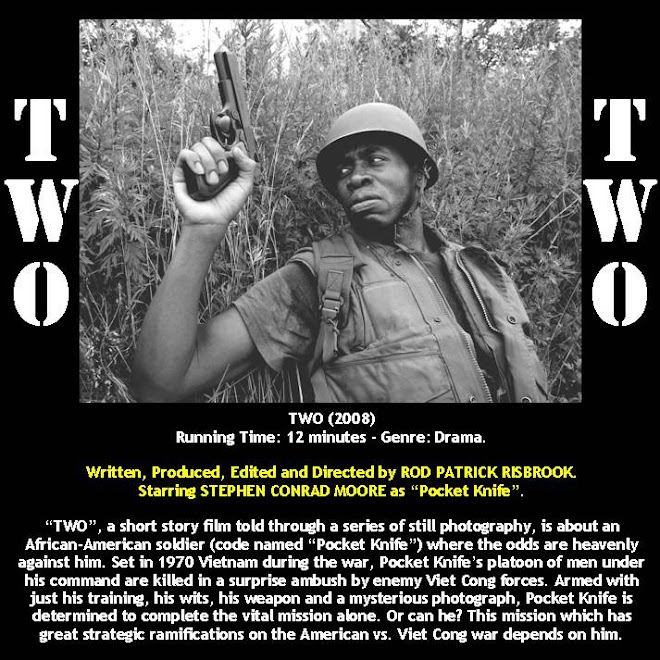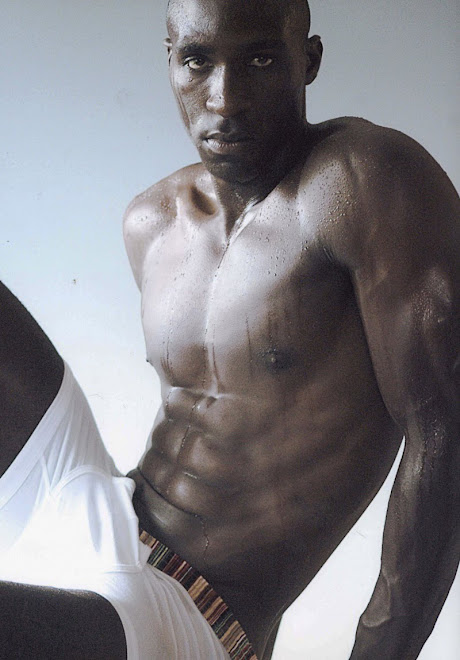"U ntitled"
ntitled"
2005
1 table with 47 milk glass elements, 1 plaster bust, 1 plaster head, 1 standing woman and a ceramic cookie jar, 77 3/4 x 92 x 43 7/8 inches
Photo by Kerry Ryan McFate
Courtesy PaceWildenstein, New York
 ntitled"
ntitled"2005
1 table with 47 milk glass elements, 1 plaster bust, 1 plaster head, 1 standing woman and a ceramic cookie jar, 77 3/4 x 92 x 43 7/8 inches
Photo by Kerry Ryan McFate
Courtesy PaceWildenstein, New York
"I thought maybe I’ll make one big table piece using all of the collectibles and get them all out of my life at the same time...make a table piece that’s basically about the United States as a whole and use popular culture tchotchkes from around the United States. They’d all be talking to each other, all having these interactions...I decided to intersperse it with milk glass...there's something about this stuff. I also envision having a larger figure here and there, overlooking the whole scenario."
- Fred Wilson
- Fred Wilson
 "Chandelier Mori, (Speak of Me as I Am)"
"Chandelier Mori, (Speak of Me as I Am)"2003
United States Pavilion
50th Venice Biennale: Dreams and Conflicts
Photo by R. Ransick/A. Cocchi
Courtesy PaceWildenstein, New York
"I had a Venetian glass fabricator create a huge seventeenth-century Venetian glass chandelier that would normally be in pastel colors or white. Whenever I use black it relates to some history of Africans in that particular place. It’s the idea of the color black as a metaphor, or as a representation of African-Americans. It’s the notion of black - blackness- and all its other meanings in relation to the history of race but also its meanings as just the color- or lack of color- or specific materials and their own histories, and trying to confuse that a bit."
- Fred Wilson
- Fred Wilson
 "Safe House II, (Speak of Me as I Am)"
"Safe House II, (Speak of Me as I Am)"2003
United States Pavilion
50th Venice Biennale: Dreams and Conflicts
Photo by R. Ransick/A. Cocchi
Courtesy PaceWildenstein, New York
"I did the pieces in my mind right after September 11th. And it really was about that experience and just much more, about emotions and feelings. So that room is a virtual space- a state of mind, a kind of futile, ridiculous thought, wanting the world to go back the way it was before September 11th. And the pot, with the little bed and all, that sits there in the space is called 'Safe House II.' It’s another emotional space. A place to be safe."
- Fred Wilson
- Fred Wilson
 "Turbulence II, (Speak of Me as I Am)"
"Turbulence II, (Speak of Me as I Am)"2003
United States Pavilion
50th Venice Biennale: Dreams and Conflicts
Photo by R. Ransick/A. Cocchi
Courtesy PaceWildenstein, New York
"My work is essentially about where I am- and here I was, this African-American, doing a project in the American Pavilion about the Africans of Venice. The part that was the most abstract was this room that I created of black and white tile - thinking about issues of black and white. The room vibrated if you stood there and visually offset you a little bit because of that. I was also interested in institutional spaces - the kind of places that you’re familiar with but not necessarily comfortable in, like a bathroom in an airport, where you can be alone but where you’re not alone."
- Fred Wilson
- Fred Wilson
"I wanted to use black glass because it looks like a liquid. It represents ink, oil, tar, and a lot of the titles in this series refer to what liquid does. I hope some of these images come through for people because that’s how I’m thinking about them. Some have cartoony eyes that bring it back to the social and historical, relating to my own experiences as a child. For me, because of 1930s cartoons that were recycled in my childhood in the 1960s, these cartoon eyes on a black object represent African-Americans in a very derogatory way. Any material that was black could be made into something that represents an African-American. That, to me, is an extremely sad commentary. So I sort of view them as black tears."
- Fred Wilson
- Fred Wilson
 "Untitled"
"Untitled"1996
Mixed media, 5 1/2 x 5 x 6 inches
Photo by Ellen Labenski
Courtesy PaceWildenstein, New York
"I made all these pieces where there are only two objects or three. I started making them because I really dislike them and I wanted to understand why I dislike them. But then people started sending me them because they saw I was making these pieces. And I had a whole lot leftover from my travels and collecting to make the works. But I don’t collect them because I like them."
- Fred Wilson
- Fred Wilson
 "By Degree"
"By Degree"1995
Ceramic and painted porcelain,
8 x 7 x 11 1/4 inches
Photo by Kerry Ryan McFate
Courtesy PaceWildenstein, New York
"I think in the west, and particularly in America because it’s such a young country, you get the sense that so much comes into America and is re-fashioned and regurgitated without really understanding what it is. We’re such a young country, whereas in other countries they know about the history of the thing that they have and maybe that’s holding them back in some ways. So perhaps their problem is not knowing what they know. But in the United States there have been so many stereotypes about people, cultures, and ideas on very superficial levels that have been translated into the visual—black collectibles say, or graphic design, or even in architecture, or advertising. Those things they’ve hurt me in the past, because that’s how people see me before they even get to know me because of all this media material, TV and everything, you know, just very shallow understanding of a particular subject. That has prompted me to really want to know about things, to not take anything for granted, not to assume anything about anybody and try to tease out the various meanings. And then I can throw it away, but at least I know. "
- Fred Wilson
- Fred Wilson
FRED WILSON
AT WORK ON A CONCEPTUAL ART DESIGN
AT WORK ON A CONCEPTUAL ART DESIGN






Biography
 Fred Wilson was born in the Bronx, New York in 1954, and lives and works in New York. He received a BFA from SUNY/Purchase. Commenting on his unorthodox artistic practice, Wilson has said that, although he studied art, he no longer has a strong desire to make things with his hands. “I get everything that satisfies my soul,” he says, “from bringing together objects that are in the world, manipulating them, working with spatial arrangements, and having things presented in the way I want to see them.” Thus, Wilson creates new exhibition contexts for the display of art and artifacts found in museum collections, along with wall labels, sound, lighting, and non-traditional pairings of objects. His installations lead viewers to recognize that changes in context create changes in meaning. While appropriating curatorial methods and strategies, Wilson maintains his subjective view of the museum environment and the works he presents. He questions—and forces the viewer to question—how curators shape interpretations of historical truth, artistic value, and the language of display, and what kinds of biases our cultural institutions express. In his groundbreaking intervention, “Mining the Museum” (1992), Wilson transformed the Baltimore Historical Society’s collection to highlight the history of slavery in America. For the 2003 Venice Biennale, Wilson created a mixed-media installation of many parts, focusing on Africans in Venice and issues and representations of black and white, which included a suite of black glass sculptures; a black-and-white tiled room with wall graffiti culled from texts of African-American slave narratives; and a video installation of Othello screened backwards. Wilson received a John D. and Catherine T. MacArthur Foundation Achievement Award (1999) and the Larry Aldrich Foundation Award (2003). He is the Distinguished Visiting Fellow in Object, Exhibition, and Knowledge at Skidmore College. Fred Wilson represented the United States at the Biennial Cairo (1992) and Venice Biennale.
Fred Wilson was born in the Bronx, New York in 1954, and lives and works in New York. He received a BFA from SUNY/Purchase. Commenting on his unorthodox artistic practice, Wilson has said that, although he studied art, he no longer has a strong desire to make things with his hands. “I get everything that satisfies my soul,” he says, “from bringing together objects that are in the world, manipulating them, working with spatial arrangements, and having things presented in the way I want to see them.” Thus, Wilson creates new exhibition contexts for the display of art and artifacts found in museum collections, along with wall labels, sound, lighting, and non-traditional pairings of objects. His installations lead viewers to recognize that changes in context create changes in meaning. While appropriating curatorial methods and strategies, Wilson maintains his subjective view of the museum environment and the works he presents. He questions—and forces the viewer to question—how curators shape interpretations of historical truth, artistic value, and the language of display, and what kinds of biases our cultural institutions express. In his groundbreaking intervention, “Mining the Museum” (1992), Wilson transformed the Baltimore Historical Society’s collection to highlight the history of slavery in America. For the 2003 Venice Biennale, Wilson created a mixed-media installation of many parts, focusing on Africans in Venice and issues and representations of black and white, which included a suite of black glass sculptures; a black-and-white tiled room with wall graffiti culled from texts of African-American slave narratives; and a video installation of Othello screened backwards. Wilson received a John D. and Catherine T. MacArthur Foundation Achievement Award (1999) and the Larry Aldrich Foundation Award (2003). He is the Distinguished Visiting Fellow in Object, Exhibition, and Knowledge at Skidmore College. Fred Wilson represented the United States at the Biennial Cairo (1992) and Venice Biennale.




+LR+Edit+32.jpg)


.jpg)


























.jpg)



